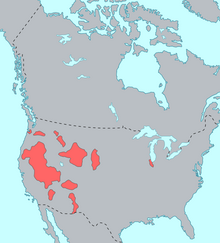Xanian
| Xanian | |
|---|---|
| Vâka Xâkömarī | |
 Vâkâ Xâkömârī in written Xanian in Vanka | |
| Pronunciation | [/vɐka ʒɐkɵmaɹɪ/] |
| Created by | Vivaporius |
| Native to | Xania |
| Native speakers | 5,270,832 in the United States 334,656 overseas (2014) |
Xanic
| |
Standard form | |
| Official status | |
Official language in | Xania |
| Regulated by | Imperial Xanian Linguistics Institute |
| Language codes | |
| ISO 639-1 | xa |
| ISO 639-2 | xan |
| ISO 639-3 | xan |
Location of nations where Xanian is a spoken language | |
Xanian (Vâka Xâkömarī, /vɐka ʒɐkɵmaɹɪ/) is a North American language spoken by 5.6 million people, and the official language of Xania. It is a member of the Xanic language family, and largely regarded as a language isolate, the second largest of its type in the world after Korean. For centuries, the Xanian language has remained distinct and separate from the rest of the languages around it, with little influence on the language until Xania's emergence into the world community in the late 1800s. Virtually nothing is known of the language's prehistory, and all information on when it first appeared in North America exists, leaving many to speculate that the language arrived with Xanians sometime around 1200 AD.
Phonology and orthography
Main articles: Xanian phonology and IPA for Xanian
Consonants
Vowels
Digraphs and trigraphs
Alphabet
Nota bene
Grammar
Cases
Nouns
Masculine
Feminine
Neuter
Diminutives and augmentatives
Articles
Definite
Indefinite
Adjectives
Comparatives
More
Less
As... as
Superlatives
Most
Least
Personal pronouns
Masculine
Feminine
Neuter
Reflexive
Possessives
Interrogative pronouns
Relative pronouns
Demonstrative pronouns
Verbs
Tenses and moods
Indicative mood
Conditional mood
Imperative mood
Voices
Continuous
Gnomic
Reflexives
Polarity
Irregular verbs
Adverbs
Word order
Numerals
Cardinal
The Xanians use a decimal, e.g. base-10 counting system within their language, basing it off of the countable appendages on their hands.
Examples:
- dī-mârok (a nation)
- nok mârokī (zero nations)
- âyn mârok (one nation)
- kor mârokī (nine nations)
- xi mârokī (ten nations)
- xidīn mârokī (a/one hundred nations)
| Cardinal numbers | |
|---|---|
| Number | Xanian |
| 0 | nok |
| 1 | âyn |
| 2 | tīr |
| 3 | vyâ |
| 4 | jâr |
| 5 | yân |
| 6 | sīn |
| 7 | šan |
| 8 | zon |
| 9 | kor |
| 10 | xi |
| 11 | xi-âyn |
| 12 | xi-tīr |
| 13 | xi-vyâ |
| 14 | xi-jâr |
| 15 | xi-yân |
| 16 | xi-sin |
| 17 | xi-šan |
| 18 | xi-zon |
| 19 | xi-kor |
| 20 | tīr'xi |
| 30 | vyâ'xi |
| 40 | jâr'xi |
| 50 | yân'xi |
| 60 | sīn'xi |
| 70 | šan'xi |
| 80 | zon'xi |
| 90 | kor'xi |
| 100 | xidīn |
| 101 | xidīn-âyn |
| 110 | xidīn'xi |
| 111 | xidīn'xi-âyn |
| 200 | tīr'xidīn |
| 1000 | xidīnko |
| 1001 | xidīnko-âyn |
| 1010 | xidīnko'xi |
| 1011 | xidīnko'xi-âyn |
| 1100 | xidīnko'xidīn |
| 1101 | xidīnko'xidīn-âyn |
| 1110 | xidīnko'xidīn'xi |
| 1111 | xidīnko'xidīn'xi-âyn |
| 2000 | tīr'xidīnko |
| 10,000 | xi'xidīnko |
| 100,000 | xidīnoju |
| 1,000,000 | xidīnkovâr |
| 1,000,000,000 | xidīnyâkī |
| 1,000,000,000,000 | xidīndâvo |
| ∞ | zhâukono |
